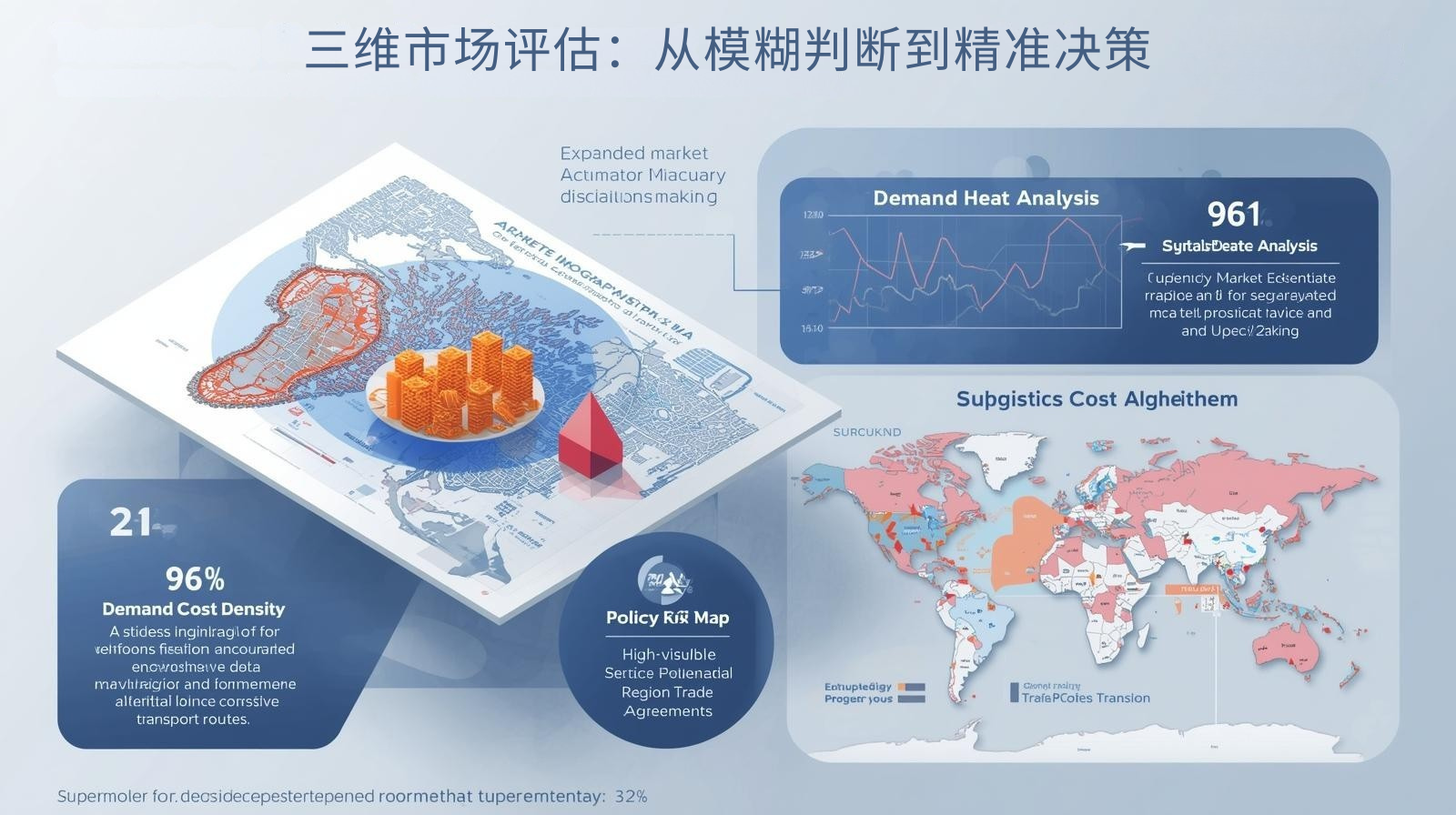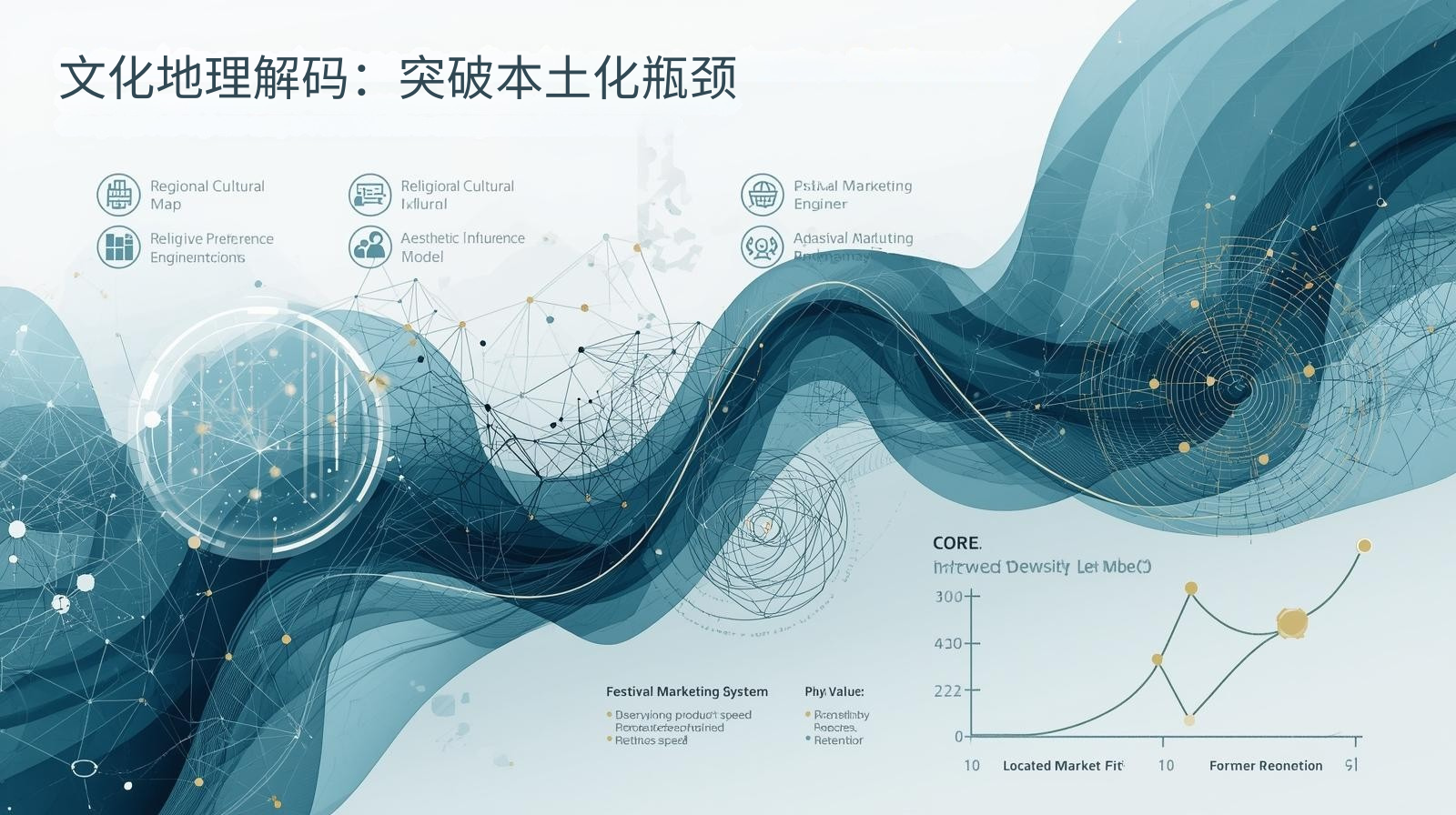Amid the wave of global trade digitalization, leading foreign trade companies have achieved a market development success rate of 78%, far exceeding the industry average of 23%. A recent McKinsey study shows that 89% of these leading companies are using geospatial optimization technology for market screening, achieving overseas expansion efficiency 4-7 times higher than traditional methods. This article will delve into the five core values that make geospatial optimization the preferred tool for leading industry companies, revealing how geospatial intelligence is reshaping global market development strategies.
 Three-dimensional market assessment: From fuzzy judgment to precise decision-making
Three-dimensional market assessment: From fuzzy judgment to precise decision-making
Technical Architecture :
- Economic Geography Map : Integrates data from 60+ dimensions, including regional GDP and industrial agglomeration.
- Demand Heat Analysis : Purchasing Density Modeling Based on Real-Time Trade Data
- Logistics cost algorithm : Calculation of optimal route for multimodal transport
- Policy Risk Map : Dynamic Visualization of Tariff Barriers and Trade Agreements
Core Values :
- Market assessment metrics expanded to 20 times that of traditional methods
- The accuracy rate for identifying high-potential areas reached 96%.
- The decision-making cycle has been shortened from quarterly to 72 hours.
Dynamic competition avoidance: Intelligent discovery of value gaps
Technical Architecture :
- Competitive Density Radar : Real-time monitoring of competitor distribution
- Service Gap Detection : Identification of Unmet Localization Needs
- Logistics network optimization : low-competition, high-demand node positioning
- Policy Dividend Warning : Early Detection of Emerging Free Trade Zones and Special Economic Zones
Core Values :
- Market competition intensity decreased by 65%.
- Profit margins in new markets increased by 40-50%.
- Customer acquisition costs decreased by 60%.
 Decoding Cultural Geography: Breaking Through Localization Bottlenecks
Decoding Cultural Geography: Breaking Through Localization Bottlenecks
Technical Architecture :
- Regional Cultural Map : A database of business customs from 300+ niche markets
- Religious Influence Model : A Quantitative Analysis of the Impact of Faith on Consumption Decisions
- Aesthetic Preference Engine : Product Adaptation Suggestions Based on Geographical and Cultural Characteristics
- Festival Marketing System : Intelligent Reminders for Local Commercial Events
Core Values :
- Localization solution design speed increased by 4 times
- Product market fit increased by 55%.
- Customer retention rate increased by 3 times
Real-time risk prevention and control: Building a market early warning system
Technical Architecture :
- Port dynamic monitoring : Congestion warnings for global logistics nodes
- Industry Migration Tracking : Analysis of Location Changes in Manufacturing Clusters
- Policy Change Map : Geographic Impact Assessment of New Trade Regulations
- Disaster Early Warning System : Predicting the Impact of Natural Events on Supply Chains
Core Values :
- Risk identification speed increased by 6-8 times
- Sudden losses reduced by 75%
- Market responsiveness increased by 500%
Intelligent resource allocation: maximizing geographical advantages
Technical Architecture :
- Sales Force Optimization : Potential-Based Team Deployment Algorithm
- Warehouse network design : Intelligent site selection to minimize logistics costs
- Targeted advertising : Digital marketing at the administrative district level
- Offline event strategy : Optimal event planning with the best reach radius
Core Values :
- Resource utilization efficiency increased by 250%
- Return on unit input increased by 5-7 times
- Market expansion speed increased by 6 times
Join the choice of industry leaders
Pinshop offers: ✅ 3D market assessment model ✅ Dynamic competition avoidance tools ✅ Cultural decoding solutions ✅ Real-time risk warning system ✅ Resource optimization and allocation platform
Recommended article: Multilingual Independent Website Strategy: Balancing Localization and Internationalization 






